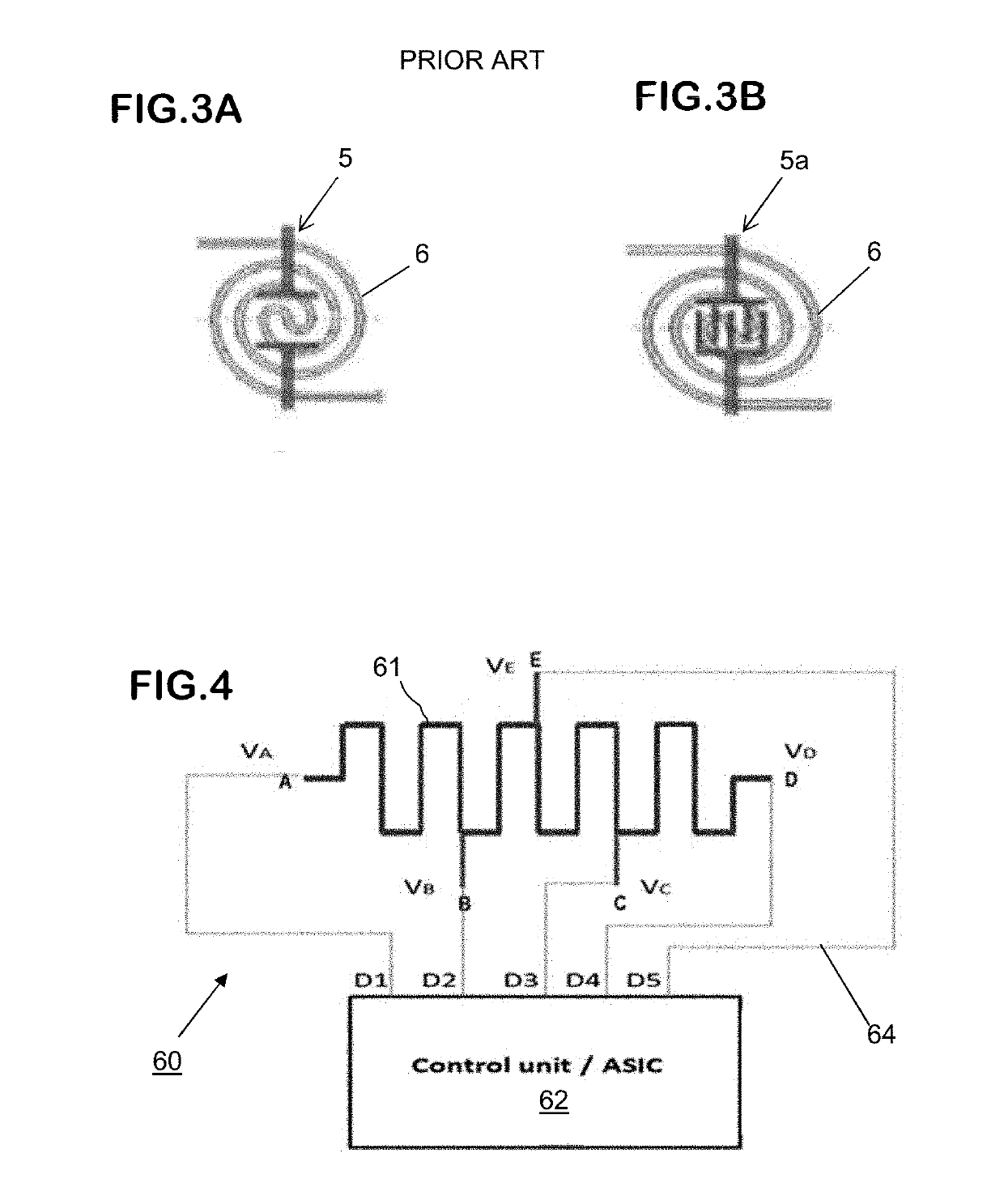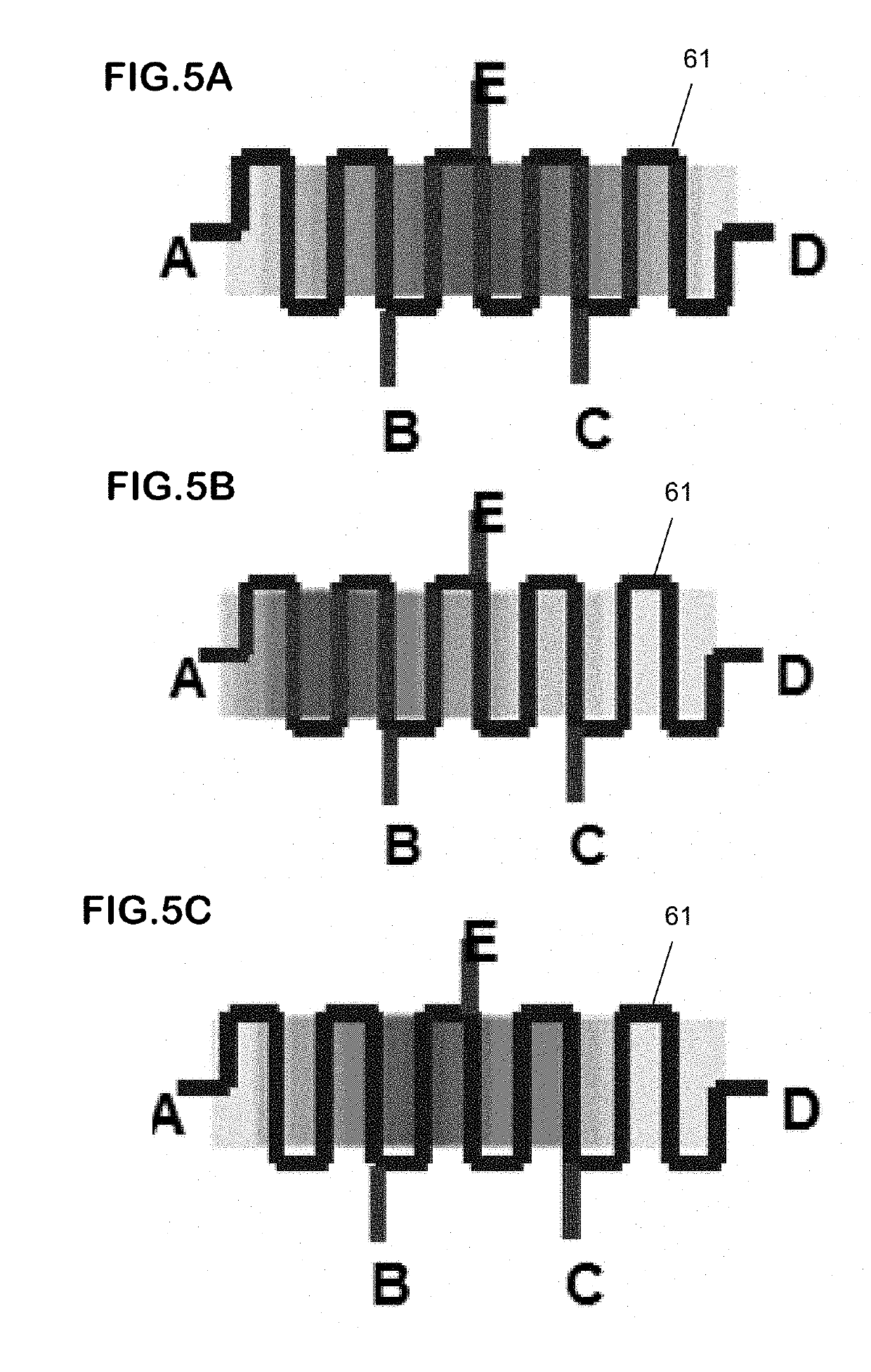Gas sensor with a configurable heating element, and methods exploiting the configurability
a technology of gas sensors and heating elements, applied in the field of gas sensors, can solve the problems of significant deviations between the measurements taken by individual devices, differences in thickness and homogeneity of the membrane and heating material, and heating of gas-sensitive layers to different temperatures, so as to reduce the time required to acquire measurement data characterizing the response of gas-sensitive layers at different temperatures and increase the speed of acquisition of measurement data at different temperatures
- Summary
- Abstract
- Description
- Claims
- Application Information
AI Technical Summary
Benefits of technology
Problems solved by technology
Method used
Image
Examples
Embodiment Construction
[0074]FIG. 4 illustrates an example of a heater assembly 60 that may be used in a gas sensor according to a first embodiment of the invention. FIG. 4 does not show details of the remainder of the gas sensor (e.g. gas-sensitive layer, measurement electrodes to detect the reaction of the gas-sensitive layer to gas species, and so on).
[0075]In the heater assembly 60 of FIG. 4, a heating element in the form of an electrically-conductive heater track 61 is connected to a control unit 62 by conductors 64. The control unit 62 is connected to a source of electrical power (not shown) of any convenient type, e.g. a battery, a mains power source, and so on. If desired, one or more temperature sensors may be associated with the heater assembly to detect the actual temperature(s) produced by the heater track at one or more locations of interest.
[0076]The heater track 61 may be formed of any convenient material, such as a conductive material of the usual types employed in heating elements of gas ...
PUM
| Property | Measurement | Unit |
|---|---|---|
| temperature | aaaaa | aaaaa |
| angle | aaaaa | aaaaa |
| resistance | aaaaa | aaaaa |
Abstract
Description
Claims
Application Information
 Login to View More
Login to View More - R&D
- Intellectual Property
- Life Sciences
- Materials
- Tech Scout
- Unparalleled Data Quality
- Higher Quality Content
- 60% Fewer Hallucinations
Browse by: Latest US Patents, China's latest patents, Technical Efficacy Thesaurus, Application Domain, Technology Topic, Popular Technical Reports.
© 2025 PatSnap. All rights reserved.Legal|Privacy policy|Modern Slavery Act Transparency Statement|Sitemap|About US| Contact US: help@patsnap.com



